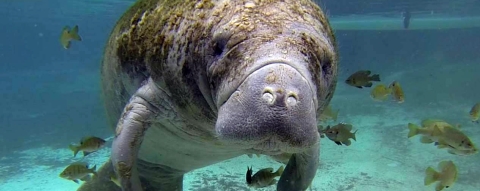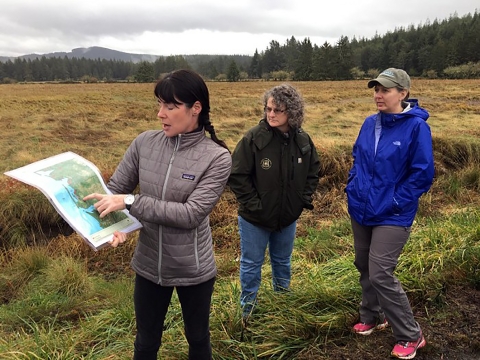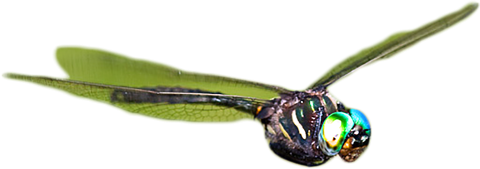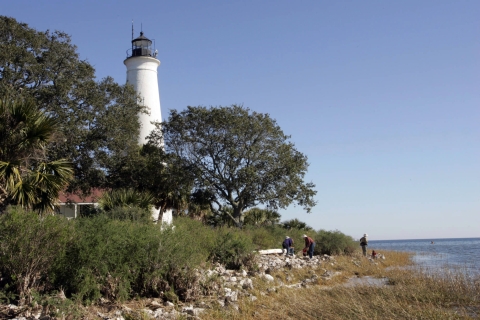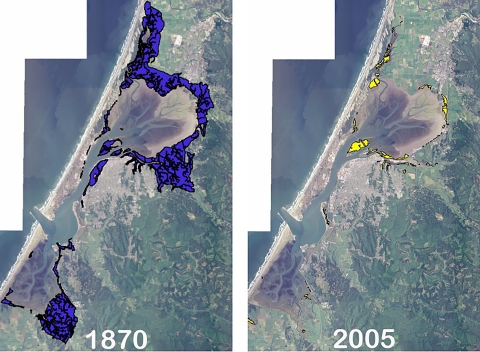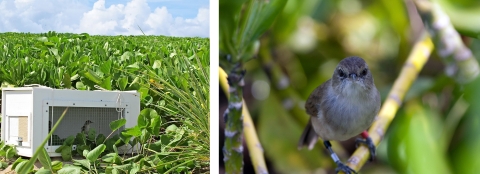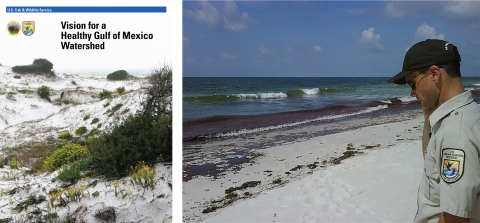The U.S. Fish and Wildlife Service’s Coastal Program helps communities to conserve habitats that are important to them. In addition to financial assistance, we provide technical assistance that helps project partners and builds capacity within the conservation community.
“Technical assistance is what we do to understand a problem and develop a solution. It is also the work we do to evaluate the success of our actions, which improves future conservation efforts.” — Mark Secrist, Coastal Program
Technical assistance is the cornerstone of the Coastal Program’s conservation approach. It allows us to have a broader impact on conservation by facilitating evidence-based decisions, refining conservation plans and policies, and improving the science of restoration.
What is Technical Assistance?
Technical assistance consists of planning and design activities that support habitat conservation, whether or not it leads directly to a specific habitat improvement project. Planning and design is the process of developing strategies and priorities, creating tools and resources, and planning projects to support conservation.
We provide technical assistance to other U.S. Fish and Wildlife programs (e.g., Endangered Species, National Fish Passage, and Wildlife and Sport Fish Restoration Programs) and partners (e.g., land trusts, state agencies, and private landowners) to achieve shared conservation objectives. We are required to be substantially involved in a project for that project to receive Program funding, and our technical assistance is one way that we can have that involvement.
Technical Assistance Examples
Advancing Conservation Priorities
Our technical assistance can advance the U.S. Fish and Wildlife Service’s priorities within our agency and among other federal agencies. As a community-based conservation program, we can also deliver these priorities to states and local communities when there are shared interests.
Recognizing the importance of island ecosystems and their vulnerability to invasive species invasive species
An invasive species is any plant or animal that has spread or been introduced into a new area where they are, or could, cause harm to the environment, economy, or human, animal, or plant health. Their unwelcome presence can destroy ecosystems and cost millions of dollars.
Learn more about invasive species , the U.S. Fish and Wildlife Service and Island Conservation adopted an Island Restoration Memorandum of Understanding. The memorandum promotes the removal of invasive species for the benefit of native, island plants and animals. In support of this effort, we prepared Restoring Island Ecosystems— a brochure that explains the importance of island conservation and highlights several successful restoration projects with specific biological outcomes.
Helping State Conservation
Our strategic work plans that guide our conservation activities are influenced by state and community priorities. By providing technical assistance to states and communities, we are helping to deliver on-the-ground conservation.
We co-manage the National Coastal Wetlands Conservation Grants along with the Wildlife Restoration and Sport Fish Restoration Program. Annually, this grant program distributes $18–20 million to States applying to conserve wetlands and uplands that provide important coastal habitat for fish and wildlife, as well as recreational opportunities for people.
Our field staff work with state agencies and other partners to identify and develop high-quality conservation projects and prepare competitive grant applications. Our Headquarters and regional staff review, rank, and make recommendations for funding to the Department of Interior and U.S. Fish and Wildlife Service leadership.
Helping Community Conservation
We provide technical assistance to local communities seeking to implement habitat conservation that is important to them. Our assistance fosters environmental stewardship and enables communities to contribute to conservation.
In Michigan, local communities are helping with the recovery of the endangered Hine’s emerald dragonfly. We train volunteers to record dragonfly locations, evaluate invasive species threats, and identify potential restoration sites. They are also evaluating habitat for the endangered piping plover and eastern massasauga (rattlesnake) — a species considered for listing under the Endangered Species Act. The information gathered resulted in the restoration of over 400 acres of wetland and upland habitat.
In Hawaii, we are working with the National Oceanic and Atmospheric Administration and Malama na Honu to train local volunteers to document the location and behavior of Hawaiian green turtles. This information will improve our understanding of sea turtle ecology and support the recovery of this federally threatened sea turtle.
Supporting the National Wildlife Refuge System
Through our technical assistance, we can advance the mission and priorities of the National Wildlife Refuge System. In addition to assistance on refuges, we can deliver the mission and priorities to the surrounding communities.
The North Florida Refuge Complex includes the St. Marks National Wildlife Refuge, St. Vincent National Wildlife Refuge, and conservation easements in Georgia and Florida. The complex protects nearly 95,000 acres of habitat for wildlife.
We provided technical assistance by conducting a small mammal survey, which helped to develop a species list for the complex. This information supports the refuges’ comprehensive conservation plans, and informs management and public use decisions.
In California, Humboldt Bay has lost 90% of its tidal salt marshes. To reverse this trend, the Humboldt Bay National Wildlife Refuge is restoring White Slough — a salt marsh salt marsh
Salt marshes are found in tidal areas near the coast, where freshwater mixes with saltwater.
Learn more about salt marsh that was historically drained and diked for agriculture, and later managed as a freshwater wetland.
We provided technical assistance by conducting a topographic survey and preparing the restoration design that will restore 41 acres of tidal salt marsh. We also worked with partners to acquire the regulatory permits and additional project funding, including a $1,000,000 National Wetlands Conservation Grant Program award.
Building Restoration Capacity
We have a broad impact on conservation through our capacity building among partners and communities. Through this type of technical assistance, we are helping communities to make better decisions and implement more successful restoration projects.
Land use changes are affecting our Nation’s rivers and streams. These changes have resulted in the loss of aquatic and riparian riparian
Definition of riparian habitat or riparian areas.
Learn more about riparian habitats due to erosion, sedimentation, and pollutants. To better balance the needs for conservation and development, we create resources and training courses that improve the science and delivery of stream conservation.
This type of assistance allows us to have a broader impact on conservation by enhancing people’s knowledge of stream functions, and improving restoration planning and design. For example, we estimate that participants from one stream assessment course will cumulatively use their training on 60 restoration projects and 30 miles of stream annually.
Fish passage is the ability of fish or other aquatic species to move freely throughout their life to find food, reproduce, and complete their natural migration cycles. Millions of barriers to fish passage across the country are fragmenting habitat and leading to species declines. The U.S. Fish and Wildlife Service's National Fish Passage Program is working to reconnect watersheds to benefit both wildlife and people.
Learn more about fish passage , support stream processes, and improve public safety.
Monitoring for Success
We evaluate the success of our conservation by monitoring the outcomes of our actions. We also help partners to monitor their conservation actions. Through this type of technical assistance, we are able to improve the science and delivery of conservation.
In the Northwestern Hawaiian Islands, we are working with the National Wildlife Refuge System, American Bird Conservancy, and others to translocate critically endangered Nihoa millerbirds from Nihoa Island to Laysan Island. The translocation creates a second population of Nihoa millerbirds to reduce their risk of extinction and restore the ecology on Laysan Island, where a closely related millerbird species went extinct.
Our technical assistance includes planning for the translocation and monitoring for biological outcomes. The monitoring shows a robust increase in Nihoa millerbirds on Laysan Island. A study on this project suggests that translocation may be useful model for the recovery of other endangered species.
Responding to Environmental Disasters
Whether it is an oil spill, hurricane, or other environmental disaster, we support the U.S. Fish and Wildlife Service’s response through our technical assistance, including damage assessments, restoration planning, and coordination.
The Deepwater Horizon oil spill was catastrophic to the Gulf Coast region. To coordinate a strategic response, the U.S. Fish and Wildlife Service published the Vision for a Healthy Gulf of Mexico Watershed. We were instrumental in the development of this vision that articulates the conservation priorities and serves as a catalyst for coordinating landscape-scale restoration along the Gulf Coast.
The U.S. Fish and Wildlife Service’s Coastal Program is a voluntary, partnership-based, habitat conservation program. Working on public and private land, locally-based field staff provide technical and financial assistance to willing partners to conserve fish, wildlife, plants, and their habitats for the continuing benefit of the American people.
Learn more at Coastal Program.


